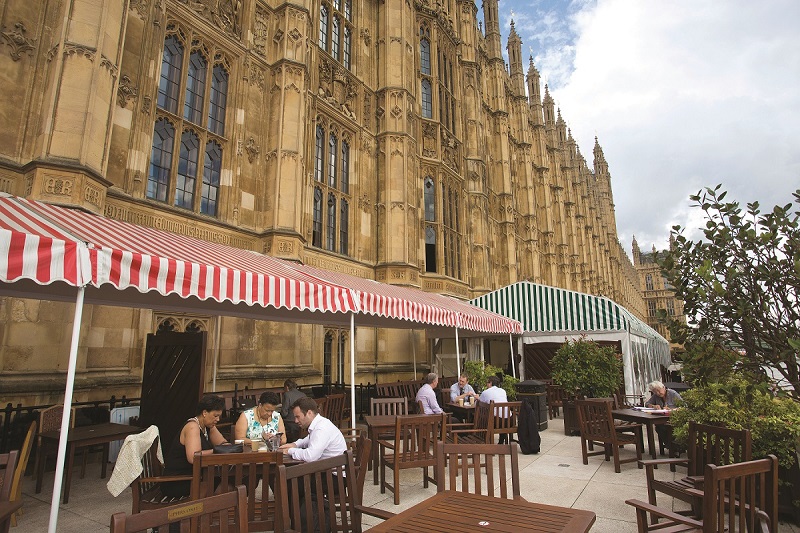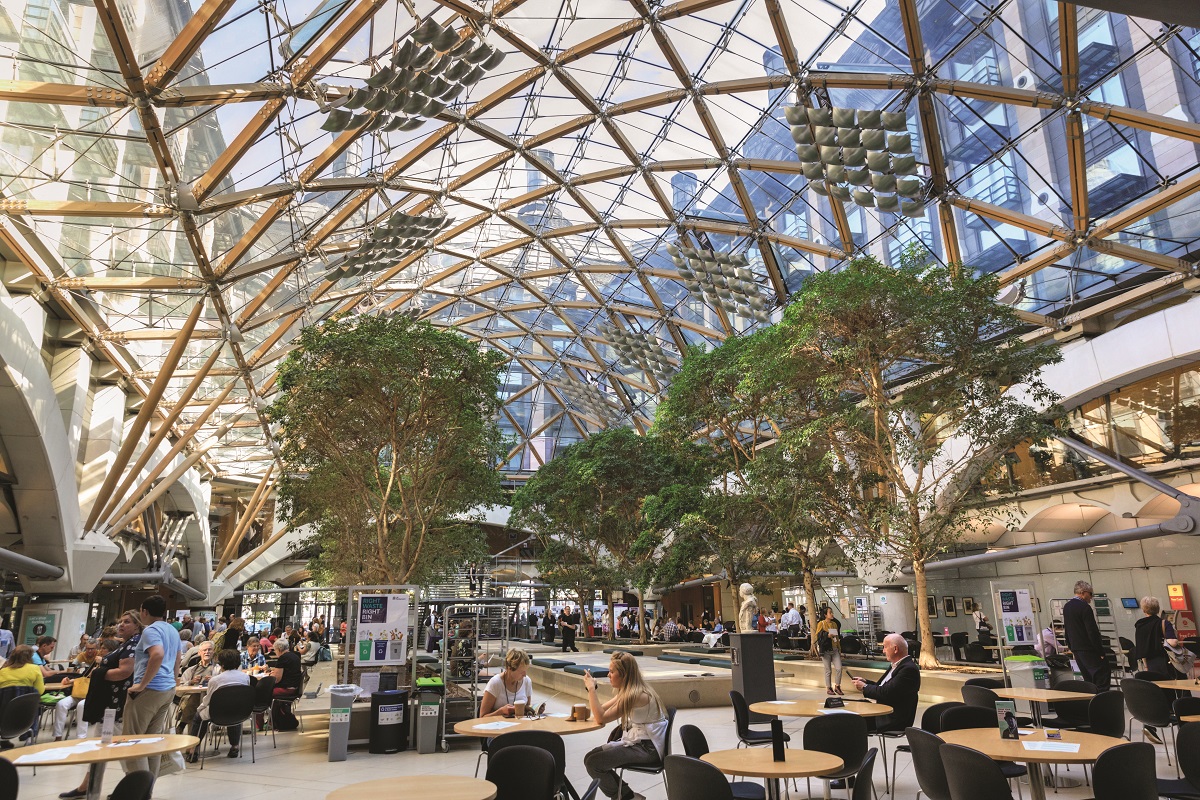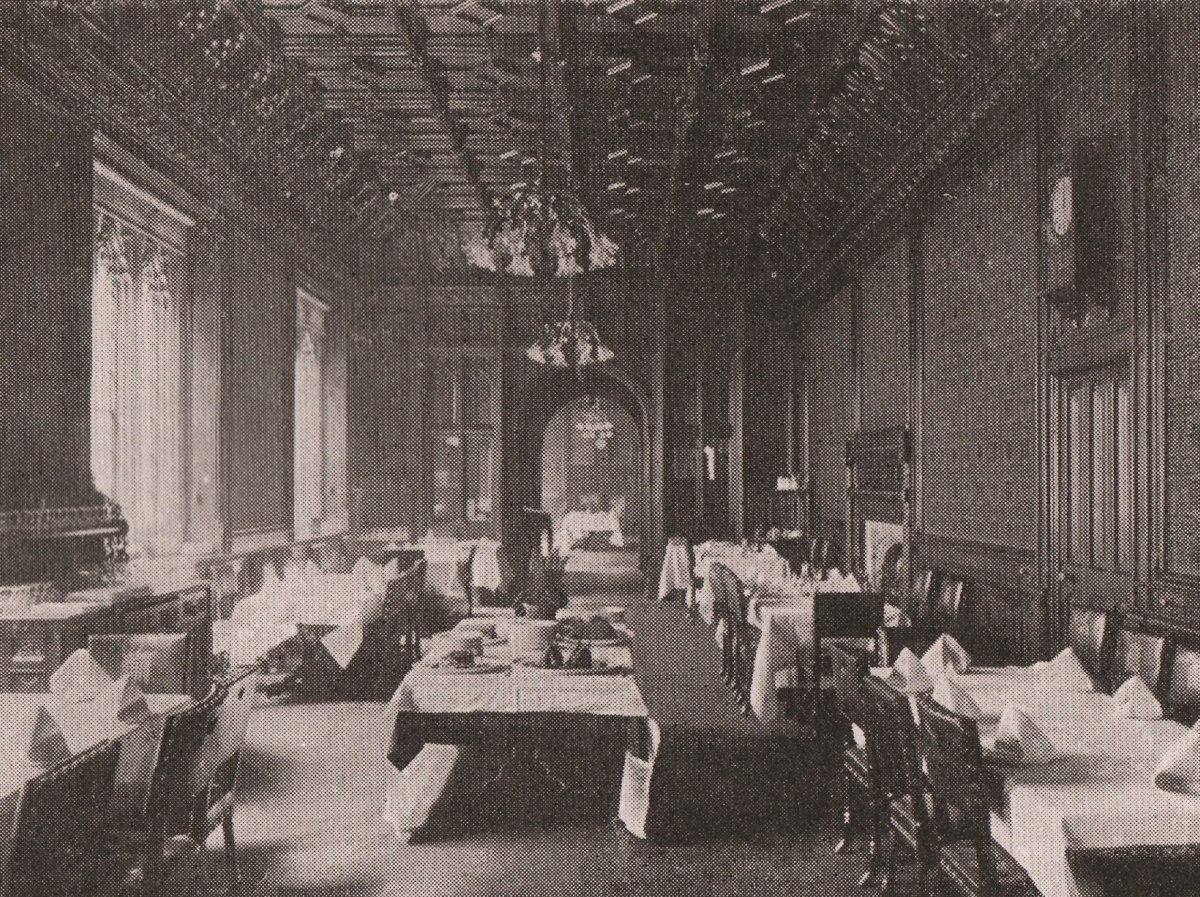Orders, Orders: Top food critic Tanya Gold reviews Parliament's restaurants
9 min read
Top food critic Tanya Gold has eaten in some of the finest restaurants in the world. So The House asked her to run a taste test on Parliament’s culinary offerings.
The Terrace Cafeteria in the Palace of Westminster has wood-panelled walls and a fine plaster ceiling; ornamental chandeliers; an art collection; views of the Thames. It is one of the finest rooms in London, excepting the flooring, which is grey rug (in the dining room) competing with brown plastic (in the serving room), which is a face-off of tat screaming with self-confidence, like a duke with a Tesco’s carrier bag.
I can, this restaurant preens, have a brown plastic floor, and no one will think less of me. They will think more of me, I am a caff-palace.
It smells of toast. This is a greasy spoon; a very mad and dissonant greasy spoon, because it was designed by Charles Barry and Augustus Pugin; sometimes, I think, for spite.
This palace built on marsh, which is falling apart for added charisma, is, as well as being beautiful and one of the most unsafe workplaces in Britain – it’s the wiring – the most intense place I have found outside a Roman shrine.
I do not know how anyone can work, let alone eat here. Yet I will try, because I want to know whether to envy or pity our legislators in this matter. You can tell a lot about people from the way they eat.
The old palace had a caff called Bellamy’s, run by a man called John Bellamy, and then by another man called John Bellamy. His pies were so fine that Pitt the Younger said on his deathbed: “I think I could eat one of Bellamy’s pork pies.” Perhaps he did eat one. Perhaps it was spin. But Bellamy’s burnt down with the old palace in 1834, and, though there is a still a Bellamy’s at 1 Parliament Street, there are too many parliamentarians to feed there.

So I am here instead. Where else do you find crunchy nut cornflakes with Pugin tiles and museum-class art with non-artisanal yogurts? I think voters would be pleased to know that their adequate, sorry, full English breakfasts are replicated here. There is a system of segregation, which irritates me – signs indicate certain tables are reserved for MPs – but it is not food based. If it isn’t bad, it isn’t good either. There is a lifelessness to the egg, sausage, bacon. The toast is that comforting kind of squashy toast. It is, weirdly, as if for children or the very old, pre-buttered – or margerined? – for you. This is a working breakfast: a breakfast for alcoholics, and workaholics and people who have been up all night and need to eat something – pig fat – before they collapse.
I watch the terrace through bleary windows. On a sullen day like this, the idea of joy on the terrace is only a dream. I suppose it was worse during The Great Stink, when no one could eat. But there is a consolation inside, alongside the adequate sausages and the squashy toast: portraiture and landscape.
This is a palace, and, like all palaces, it worships itself. That is the point of it. And so, no matter how dismal and forgotten the corridor, there will be a painting of part of the palace, or another part, or both parts, or some man who worked here and did something, or nothing, on the wall. There will be a view. In the Terrace Cafeteria the palace shows its family photographs. Itself. Here is me in 1300; in 1500; in 1900. This is me in the Great Freeze of 1895. This is me in ruins.
I do not know how anyone can work, let alone eat here. Yet I will try, because I want to know whether to envy or pity our legislators in this matter.
And so, at last, because I have always considered the palace a very unsuitable place for a modern legislature, I understand why they stay, and do not do the sensible thing and just move out, and let it fall into the Thames. It is because it makes no sense: it is the self-confidence of the British ruling class. The food, at least in this cafeteria, brings them down to earth. If this were anything other than a normal greasy spoon, no one could morally survive it. It’s not often I call toast essential to the soul, but this is.
Lunch is in a restaurant called The Adjournment in Portcullis House. This is an absurd name even for a restaurant, and it offers, “contemporary casual dining featuring classic favourites and modern dishes”. As ever, I imagine the counter PR babble, which would offer, “ancient formal dining featuring unknown dishes that people hate from the past”. The name is laconic, and it has to be. It is up against The Debate (sounds angry and offers an “extensive range of snack items”) and the Despatch Box, which sells paninis, and sounds worse. As if you could eat a panini at the despatch box, or anything. I wonder what names were rejected before they came to The Adjournment. I ponder The Compromise (Italian?) The Resignation (cake?)
The Adjournment has as little in common with Pugin’s thrilling working-class-caff-palace as wine with dust. It does have an identity, but it is vapid, surely by design. It looks like a shed made of Lego, with added glass. The art is a rug called Wall Hanging by Allegra Hicks. (After bothering to think up The Adjournment, I think they gave up). It is red squiggles on grey. The carpet is grey, though fine; the chairs are red and spindly; the tables are good quality wood. We could be in IKEA, or the John Lewis café on the King’s Road; we have moved up a class from the mad caff. We are now in middle class good taste/no taste land and that is how it should be. It’s a representative legislature, after all.

It is brasserie food for brasserie people, and it is good, apart from the mushroom soup. Ideally, this should have identifiable pieces of mushroom bobbing in a pale-ish liquid. It’s reassuring, and it allows you to know it is mushroom soup, and not some foul imposter. This mushroom soup doesn’t. It is ground down, as if by a maniac, to a near black swamp of used-to-be-mushroom-but-that-was-then. You don’t always need to be quite so explicit about the fact you are destroying food.
The steak frites, though, are superb, particularly the frites. It’s almost impossible to cook a perfect steak because it is so easy. That’s the way. There are perhaps five restaurants in London where you can get an excellent steak – try Beast and Hawksmoor Guildhall – and it would be terrible if this was one of them. But it’s fine and the frites are as good as frites can be, and served in a gilded cup, as they are at The Wolseley, whose food, I suspect, The Adjournment is grasping towards. The chicken caesar salad is likewise very fine. It’s a good and utterly soulless restaurant, and that is just what it needs to be. One cannot gaze forever at the sun. Though I don’t think I could ever get used to eating under a screen which said: “Subsidy Control Committee”. The charming female MP I am with worries that the food in the palace is designed to make people fat. That may be true, but I think it anchors them to this world.
The Adjournment has as little in common with Pugin’s thrilling working-class-caff-palace as wine with dust.
I eat dinner in the Peers’ Dining Room. I like the Lords because they work hard – the ones who turn up anyway – and they don’t exist for the News at Ten because News at Ten isn’t interested in them. They are allowed to be idiosyncratic, in the way the Commons aren’t. I also like them because Pugin dumped all the gold at this end of the palace and the peers, therefore, submit to living inside what is essentially a dead madman’s Catholicism. I don’t think the people who work here are aware of the intensity of this building. It crawls though me, like a spell.
I am not a member of a gentleman’s club so I cannot tell you if it is just like dining inside a gentleman’s club. But I am sure it is. I think it is the original gentleman’s club. The walls are a fanatic yellow. The carpets look like they could, if they wished, hurt you. The chairs are red, to match the chamber. (I love this. The caff had it too, in green). The windows should come with an exclamation mark, but this is an original dining room; it has never been anything else. I watch a peer come in and be seated next to the last peer who came in, to discourage factionalism, or bullying, or megalomania. They mostly look tired. Uneasy is the head.
“Mouse!” screams a peer, for my benefit. The tourists must see the attractions: the paintings; the peerage; the mice. I like the mouse. I should like to see its home, its comforts, its babies. The building is alive.

I would say it is Rules – my favourite restaurant in the in world – with foreign parts. (Leftists would call it “colonisation” but it isn’t. It’s tribute). I would serve just dumplings and golden syrup pudding and cow if it were my decision – just like Rules, my favourite restaurant in the world – but I wonder if peers rejected it because it is what people expect them to eat, so they don’t.
We begin with smoked salmon. It is very good smoked salmon but, in the way of aristocracy, it seems wary of seeming to be too good at being smoked salmon, so it tries to fail a little to be polite. This is a convoluted way of saying: this smoked salmon doesn’t need pickles, or dill. Then we have the Cotswold chicken, which does its best under the circumstances. The vegetables are an amazing array, as if prepared by a person who frets about vitamins all its waking hours. Pudding is a honey tart, and like most tarts, it is so much better than it needs to be, but pastry chefs are special.
And, so, like frogs in boiling water – that is, they do not know it, because they eat here every day – the peers have, in my definition, a very good restaurant, which is a restaurant that knows what it is for. It’s a themed restaurant, like the Rainforest Café or the weird pop-up Cadbury’s Crème Egg café that flowered in Soho, was mobbed, and disappeared. It’s a restaurant that outsiders would appreciate far more than the people who eat here, and that seems to me a wonderful kind of justice.
